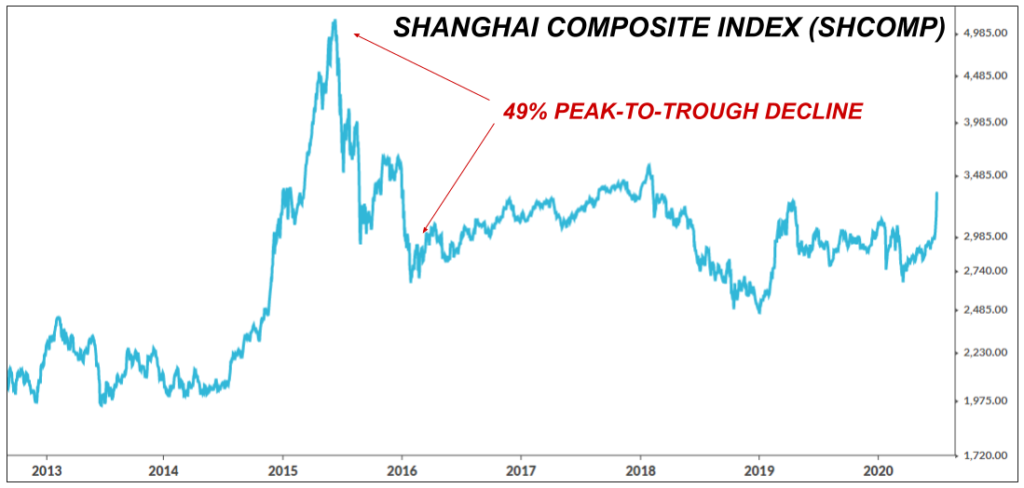U.S. capital markets are no longer free. If they were quasi-free markets before, they are more or less state-directed markets now.
This assessment comes from Ray Dalio, one of the most connected hedge fund managers in the world. Dalio founded Bridgewater Associates, one of the largest hedge funds in the world, in 1975. His personal net worth is in the $15 billion to $20 billion range.
“The capital markets are not free markets allocating resources in traditional ways,” Dalio said in a recent Bloomberg interview. “The economy and the markets are driven by the central banks in coordination with the central government.”
Dalio believes this emergency coordination has merit because the U.S. economy had to be saved. But he also sees a downside.
“You are going to see central banks’ balance sheets explode,” he told Bloomberg.
So, what does it look like when capital markets are no longer free? To get a clear picture, we can look to China, where the government just engineered a rip-roaring rally in the stock market.
As the Financial Times reported on July 6:
China’s stock market recorded its biggest rally in more than a year on Monday after state media encouraged investors to pile into the market and reap the benefits of a post-coronavirus economic boom.
State-owned Shanghai Securities News ran a story on Friday titled “Hahahahaha! The signs of a bull market are more and more clear.” A Xinhua story on Monday said investors were “running” into stocks while a front-page editorial in the state-run China Securities Journal on Monday talked up the prospect of a “healthy” bull market, adding that investors could look forward “to the wealth effect” of rising prices.
When China’s state-run media talks up the stock market, Chinese investors don’t rush to buy because they think it is sound advice. They understand that it’s a signal.
When the government says “buy,” it’s a green light to buy with both hands — because the government makes the market go up.
Then, too, at least in theory, the government won’t let the market decline. China has a group of state-backed buyers, known as the “national team.”
The national team reportedly buys stocks when Beijing orders them to. And yet a lot of the impact is psychological: To the extent Chinese investors believe in the national team, sell-offs are prevented because the real buyers stay confident.
There are at least two big problems here.
The first problem is that manipulated markets fail to do their job. To the extent that prices are distorted, publicly traded companies are not valued correctly. Bad companies plod along, good companies face zombie-like competition, and investor capital is misallocated.
This is harmful to the underlying economy and defeats the logic of markets in the first place.
The second reason is also dangerous: Because the authorities can lose control of manipulated markets, and, when they do, those markets tend to crash.
The crash is the result of a divergence from reality becoming too extreme, as stock valuations get pumped up to impossible levels through frenzied speculation.
Eventually the bullish feedback loop, which had driven prices higher and higher, turns on itself. Then a sharp decline follows, if not an outright crash, even if the government tries to prevent it.
This is what happened the last time the Chinese government tried to engineer a big bull run in stocks, as you can see via the chart below.

In 2014, China’s authorities decided a stock-market rally would be good for the economy. They put the word out through the usual outlets, and a huge run-up followed.
The move was spectacular while it lasted — but the follow-on collapse was brutal. After peaking in June 2015, the Shanghai Composite Stock Market Index saw a 49% peak-to-trough decline in seven months.
This is the normal order of things when markets are manipulated by state-directed intervention.
If buyers feel they can’t lose — because the government won’t let them — they will press their bets until, finally, the distortion is too much to ignore. At that point, a rush for the exits turns into a stampede.
If this is the path the U.S. stock market is on — and Ray Dalio’s view suggests that it is — investors can enjoy the party, but they’ll want to keep an eye on the door.





